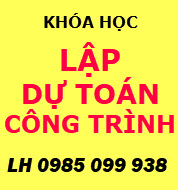H
Hugolina
Guest
The Ig Nobel Prizes are a parody of the Nobel Prizes and are given each year in early October — around the time the recipients of the genuine Nobel Prizes are announced — for ten achievements that "first make people laugh, and then make them think." Organized by the scientific humor magazine Annals of Improbable Research (AIR), they are presented by a group that includes genuine Nobel Laureates at a ceremony at Harvard University's Sanders Theater.
Giải thưởng Ig Nobel là trò nhái hài hước giải thưởng Nobel và được trao hàng năm vào đầu tháng Mười – cùng khoảng thời gian công bố tên những người được nhận giải thưởng Nobel cao quý – cho mười thành tựu “ đầu tiên khiến người ta cười và sau đó khiến người ta suy nghĩ”. Giải này do tạp chí khoa học hài hước Annals of Impobable Research (Biên niên sử về các nghiên cứu bao đồng - AIR) tổ chức và được trao hàng năm bởi một nhóm trong đó có những người đạt giải thưởng Nobel tại một buổi lễ tiến hành tại Nhà hát Sanders của Trường Đại học Harvard.
Hereafter is the list of Ig Nobel Prize winners in 2007:
•Aviation: Patricia V. Agostino, Santiago A. Plano and Diego A. Golombek, for discovering that hamsters recover from jetlag more quickly when given Viagra.
•Biology: Johanna E.M.H. van Bronswijk, for taking a census of all the mites and other life forms that live in people's beds.
•Chemistry: Mayu Yamamoto for extracting vanilla flavour from cow dung
•Economics: Kuo Cheng Hsieh, for patenting a device to catch bank robbers by ensnaring them in a net.
•Linguistics: Juan Manuel Toro, Josep B. Trobalon and Nuria Sebastian-Galles, for determining that rats sometimes can't distinguish between Japanese, played backward, and Dutch, played backward.
•Literature: Glenda Browne, for her study of the word "the".
•Medicine: Dan Meyer and Brian Witcombe, for investigating the side-effects of swallowing swords.
•Nutrition: Brian Wansink, for investigating people's appetite for mindless eating by secretly feeding them a self-refilling bowl of soup.
•Peace: The Air Force Wright Laboratory in Dayton, Ohio, for suggesting the research and development of a "gay bomb," which would cause enemy troops to become sexually attracted to each other.
•Physics: L. Mahadevan and Enrique Cerda Villablanca for their theoretical study of how sheets become wrinkled
Sau đây là danh sách những người đạt giải thưởng Ig Nobel năm 2007:
-Hàng không: : Patricia V. Agostino, Santiago A. Plano và Diego A. Golombek, vì đã phát hiện ra rằng chuột hamster phục hồi sức khỏe sau chuyến bay dài nhanh hơn khi được dùng thuốc Viagra.
-Sinh học : Johanna E.M.H. van Bronswijk, vì đã tiến hành một cuộc điều tra đếm tất cả các loài bọ mạt và các thể sống khác sống trên giường của con người.
-Hóa học : Mayu Yamamoto, vì đã chiết xuất được hương va ni từ phân bò.
-Kinh tế : Kuo Cheng Hsieh, vì đã phát minh ra một dụng cụ để bắt những tay cướp ngân hàng bằng cách bẫy chúng vào một tấm lưới.
-Ngôn ngữ học: Juan Manuel Toro, Josep B. Trobalon và Nuria Sebastian-Galles, vì đã xác định được rằng loài chuột cống đôi khi không phân biệt được giữa chữ Nhật viết ngược và chữ Đức viết ngược.
-Văn học: Glenda Browne, vì công trình nghiên cứu về từ “the”.
-Dược : Dan Meyer and Brian Witcombe, vì nghiên cứu về các tác dụng phụ của việc nuốt những thanh kiếm.
-Dinh dưỡng: Brian Wansink, vì nghiên cứu về sự ngon miệng của con người khi ăn một cách vô thức bằng cách bí mật đưa cho họ một bát súp “ăn hết lại đầy”.
-Hòa bình : Phòng thí nghiệm của lực lượng không quân tại Dayton, bang Ohio, Mỹ vì đã đề xuất một công trình nghiên cứu và sản xuất một loại bom “gây đồng tính”, sẽ khiến quân đội của đối phương say đắm lẫn nhau.
-Vật lý : L. Mahadevan và Enrique Cerda Villablanca vì công trình nghiên cứu lý thuyết về nguyên nhân khiến các vật liệu dạng tấm, phiến bị nhăn (ví dụ như giấy, chăn, ga trải giường…- người dịch)
Giải thưởng Ig Nobel là trò nhái hài hước giải thưởng Nobel và được trao hàng năm vào đầu tháng Mười – cùng khoảng thời gian công bố tên những người được nhận giải thưởng Nobel cao quý – cho mười thành tựu “ đầu tiên khiến người ta cười và sau đó khiến người ta suy nghĩ”. Giải này do tạp chí khoa học hài hước Annals of Impobable Research (Biên niên sử về các nghiên cứu bao đồng - AIR) tổ chức và được trao hàng năm bởi một nhóm trong đó có những người đạt giải thưởng Nobel tại một buổi lễ tiến hành tại Nhà hát Sanders của Trường Đại học Harvard.
Hereafter is the list of Ig Nobel Prize winners in 2007:
•Aviation: Patricia V. Agostino, Santiago A. Plano and Diego A. Golombek, for discovering that hamsters recover from jetlag more quickly when given Viagra.
•Biology: Johanna E.M.H. van Bronswijk, for taking a census of all the mites and other life forms that live in people's beds.
•Chemistry: Mayu Yamamoto for extracting vanilla flavour from cow dung
•Economics: Kuo Cheng Hsieh, for patenting a device to catch bank robbers by ensnaring them in a net.
•Linguistics: Juan Manuel Toro, Josep B. Trobalon and Nuria Sebastian-Galles, for determining that rats sometimes can't distinguish between Japanese, played backward, and Dutch, played backward.
•Literature: Glenda Browne, for her study of the word "the".
•Medicine: Dan Meyer and Brian Witcombe, for investigating the side-effects of swallowing swords.
•Nutrition: Brian Wansink, for investigating people's appetite for mindless eating by secretly feeding them a self-refilling bowl of soup.
•Peace: The Air Force Wright Laboratory in Dayton, Ohio, for suggesting the research and development of a "gay bomb," which would cause enemy troops to become sexually attracted to each other.
•Physics: L. Mahadevan and Enrique Cerda Villablanca for their theoretical study of how sheets become wrinkled
Sau đây là danh sách những người đạt giải thưởng Ig Nobel năm 2007:
-Hàng không: : Patricia V. Agostino, Santiago A. Plano và Diego A. Golombek, vì đã phát hiện ra rằng chuột hamster phục hồi sức khỏe sau chuyến bay dài nhanh hơn khi được dùng thuốc Viagra.
-Sinh học : Johanna E.M.H. van Bronswijk, vì đã tiến hành một cuộc điều tra đếm tất cả các loài bọ mạt và các thể sống khác sống trên giường của con người.
-Hóa học : Mayu Yamamoto, vì đã chiết xuất được hương va ni từ phân bò.
-Kinh tế : Kuo Cheng Hsieh, vì đã phát minh ra một dụng cụ để bắt những tay cướp ngân hàng bằng cách bẫy chúng vào một tấm lưới.
-Ngôn ngữ học: Juan Manuel Toro, Josep B. Trobalon và Nuria Sebastian-Galles, vì đã xác định được rằng loài chuột cống đôi khi không phân biệt được giữa chữ Nhật viết ngược và chữ Đức viết ngược.
-Văn học: Glenda Browne, vì công trình nghiên cứu về từ “the”.
-Dược : Dan Meyer and Brian Witcombe, vì nghiên cứu về các tác dụng phụ của việc nuốt những thanh kiếm.
-Dinh dưỡng: Brian Wansink, vì nghiên cứu về sự ngon miệng của con người khi ăn một cách vô thức bằng cách bí mật đưa cho họ một bát súp “ăn hết lại đầy”.
-Hòa bình : Phòng thí nghiệm của lực lượng không quân tại Dayton, bang Ohio, Mỹ vì đã đề xuất một công trình nghiên cứu và sản xuất một loại bom “gây đồng tính”, sẽ khiến quân đội của đối phương say đắm lẫn nhau.
-Vật lý : L. Mahadevan và Enrique Cerda Villablanca vì công trình nghiên cứu lý thuyết về nguyên nhân khiến các vật liệu dạng tấm, phiến bị nhăn (ví dụ như giấy, chăn, ga trải giường…- người dịch)
Last edited by a moderator:





